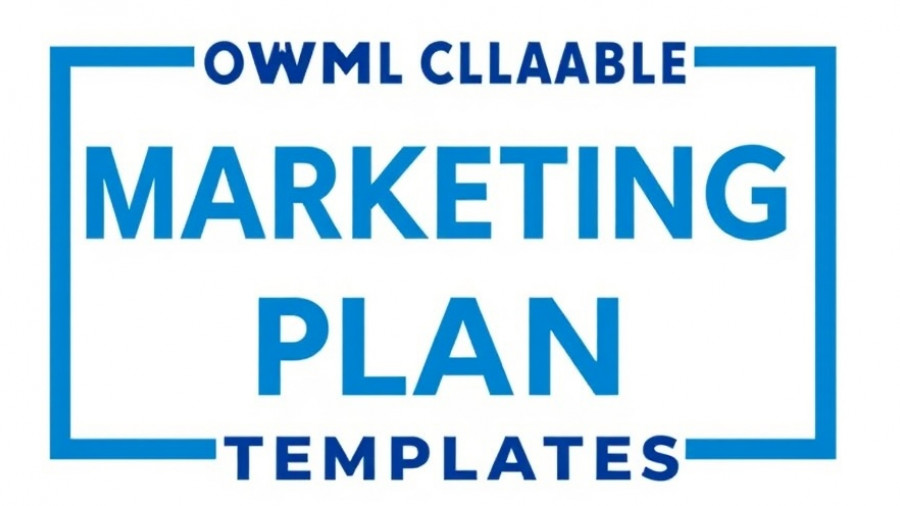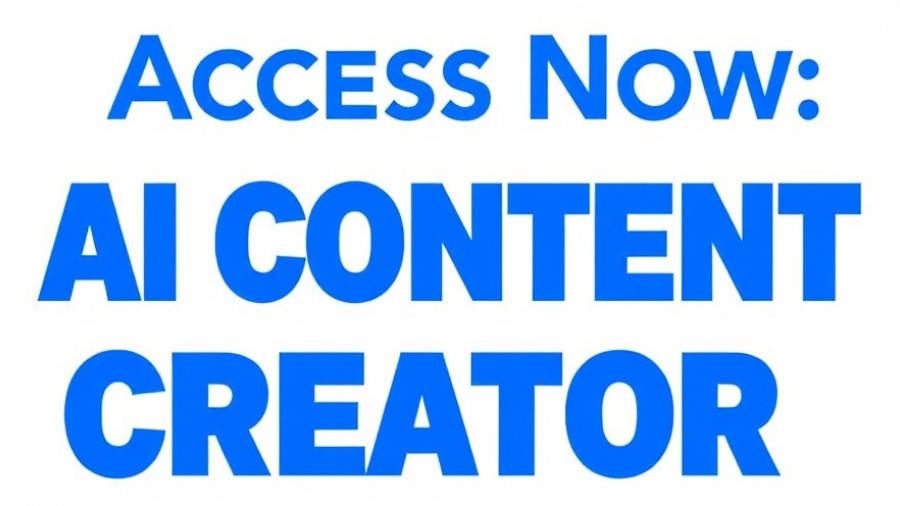
Understanding the Rise of AI in Graphic Design
As digital marketing evolves, harnessing the power of AI becomes increasingly crucial for businesses looking to streamline processes and enhance creativity. For marketers, agencies, and small to medium-sized businesses (SMBs), integrating AI tools into graphic design isn't just a trend; it's a transformative practice that can significantly enhance efficiency. The rapid evolution from traditional graphic design software to AI-driven tools reflects the changing landscape of creativity and productivity in marketing.
Testing the Best AI Tools: What I Found
In my deep dive into the world of AI graphic design tools, I engaged with eight prominent platforms known for their capabilities. The aim was not just to identify which ones produce high-quality graphics, but to understand how they can optimize workflows and return on investment (ROI) for marketers. My testing methodology revolved around utilizing specific prompts to generate various design assets, which allowed me to compare the outputs effectively.
Efficiency: The Key Benefit of AI Tools
One of the standout advantages of AI in graphic design is the remarkable time savings it introduces into the creative process. According to HubSpot’s State of AI survey, over 40% of marketers cite increased speed as a primary benefit of using AI design tools. Tasks that once took hours—like applying edits, generating images for social media, and creating custom assets—have dramatically shortened. This efficiency is vital for SMBs aiming to optimize their marketing automation and lead generation efforts.
How AI Tools Enhance Creativity
Many might assume that reliance on AI diminishes human creativity, but the opposite can be true. By automating tedious tasks, marketers can redirect their focus towards more strategic elements of their campaigns. For example, AI-assisted tools can help generate ideas for sales funnels or customized client communications, allowing professionals to focus on refining their marketing strategies rather than getting bogged down in minute details.
Creative Prompts: Testing for the Best Results
Through my exploration, each AI tool approached prompts differently. My experimentation involved asking each tool to create various assets based on a consistent theme, and the contrasts in outputs were enlightening. Some tools excelled at creating visually stunning and personalized images, while others faltered in nuance or detail. Understanding these differences is crucial for marketers in selecting the appropriate AI tool that aligns with their brand's vision and goals.
Future Predictions: Where AI Graphic Design is Headed
As we advance, the integration of AI in graphic design is expected to deepen. We might see augmented capabilities that allow for even more personalized marketing automation processes, enhancing client engagement and organic lead generation. Futuristic developments could include enhanced AI interactions that analyze consumer behavior to generate tailored content dynamically. For businesses, this means new opportunities for growth and an ever-evolving landscape of digital marketing.
Challenges and Considerations
Of course, there are risks associated with reliance on AI in creative processes. Concerns about over-dependence on technology and the need for human oversight remain significant. As effective as AI may be, using it judiciously and retaining a balance between automation and human intuition is essential for maintaining originality and branding authenticity.
The Bottom Line: Recommendations for Marketers
After testing multiple AI tools, my recommendation is to choose a platform that complements your current workflow and marketing strategies. Whether it's enhancing creative outputs for sales funnels or automating repetitive tasks, integrating AI can lead to more effective marketing strategies that resonate with audiences. Exploring these tools demonstrates not only their capabilities but also how they can facilitate growth in competitive markets.
In conclusion, embracing AI tools for graphic design not only adds value but also places marketers ahead of the curve. As businesses seek better client acquisition solutions, the strategic use of such technologies will be integral to their marketing and sales automation efforts. To discover the most suitable AI graphic design tool for your needs, delve into the world of AI-generated creativity, and explore how it can revolutionize your digital marketing approach.
 Add Row
Add Row  Add
Add 




Write A Comment